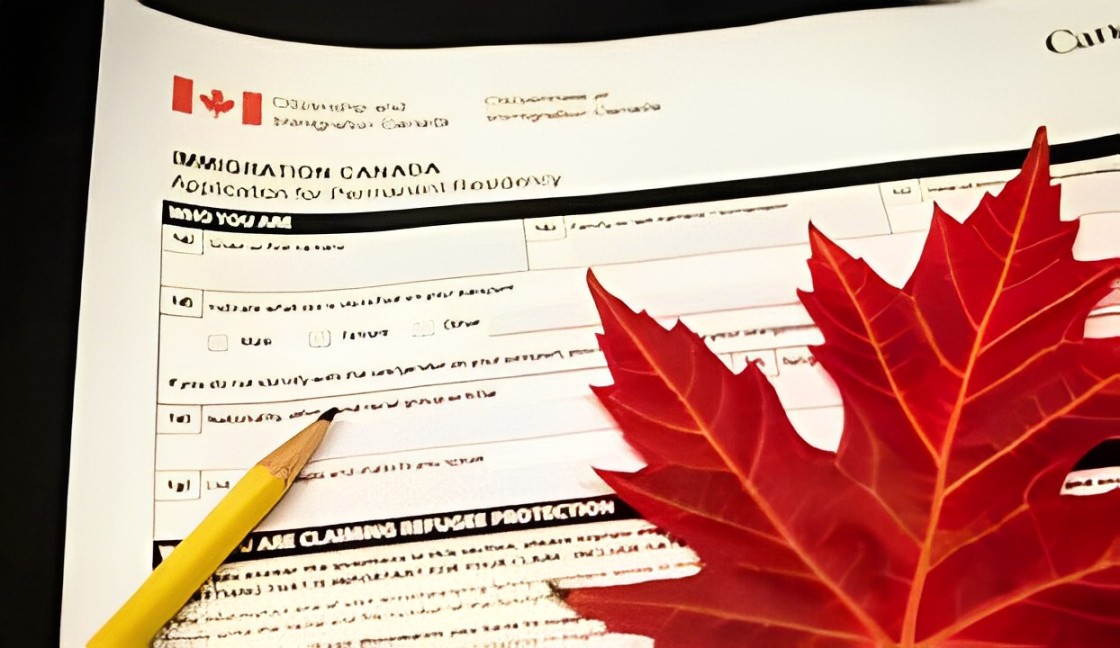Securing suitable accommodation in Canada can be challenging, particularly for international students and new immigrants. This guide covers essential considerations, types of accommodation, and resources to help you find housing in Canada. Read-Benefits of studying in Canada Key Considerations for Finding Accommodation 1. Budget: Determine your affordable rent range and adhere to it. For students, shared accommodation is often more cost-effective. 2. Proximity: Select a location near your school, workplace, or public transportation to minimize commuting time. 3. Neighborhood: Investigate neighborhoods to find areas that match your lifestyle and safety preferences. 4. Furnishing: Decide whether you need a furnished or unfurnished place based on your situation and budget. 5. Utilities: Check if utilities are included in the rent, which can simplify budgeting, especially for students. Types of Accommodation 1. Shared Accommodation: Popular among students, shared accommodation involves renting a room in a house or apartment and sharing common areas like the kitchen and bathroom. – Cost: $400 to $1,000 per month, depending on the city and type of shared space. 2. Condos: Self-contained units with private amenities like a kitchen and bathroom. – Cost: Approximately $1,000 to $1,100 per month. 3. Apartments: Suitable for families, these range from high-rise buildings to smaller complexes. – Cost: $1,200 to $1,500 for two bedrooms, $1,500 to $2,200 for three bedrooms. 4. Houses: Entire houses, often excluding the basement, are available for rent. – Cost: $2,300 and above for a three-bedroom house. 5. Basements: Often rented separately, basements can be economical but may be colder in winter. – Cost: Varies, often shared among tenants if rented by the room. How to Secure Accommodation 1. Use Trusted Websites: – Kijiji: [kijiji.ca](https://www.kijiji.ca/) – Facebook Marketplace – rentals.ca – apartments.com – zolo.ca 2. Book Temporary Housing First: Start with an Airbnb for your initial week to give yourself time to view potential rentals in person. 3. Network: Reach out to your network, including friends, family, and community groups. Churches and schools often have resources and recommendations for newcomers. 4. Avoid Scams: Never send money to a landlord without viewing the property in person. If you must arrange accommodation from abroad, use trusted contacts to view the property on your behalf. Viewing Tips 1. Surroundings: Check the cleanliness and safety of the neighborhood. 2. Interior Condition: Look for signs of leaks, rodent infestations, and overall maintenance. 3. Heating and Cooling: Verify that heating systems work well in winter and cooling systems are effective in summer. 4. Utilities: Understand how utilities are shared and billed. 5. Parking and Amenities: Confirm the availability of parking and other amenities. Lease Agreements 1. Lease Term: Most leases are for six months to a year. Ensure you understand the terms and conditions before signing. 2. Deposits: Be prepared to pay the first and last months rent upfront. Some landlords may also require a security deposit. 3. Legal Requirements: Familiarize yourself with local rental laws to avoid potential issues. Read- Rights and Responsibilties of New immigrants in canada Final Advice 1. Stay Within Budget: Choose an accommodation you can afford without straining your finances. 2. Use Your Network: Leverage your personal and community networks for recommendations and support. 3. Prioritize Comfort and Safety: Your living space significantly impacts your overall well-being. By following these guidelines, international students and new immigrants can find suitable accommodation in Canada, ensuring a smoother transition into their new environment. For more detailed advice and personal experiences, consider subscribing to relevant YouTube channels and online forums dedicated to newcomers in Canada. Let Worldbridge Immigration Services be your guide to a successful future in Canada Contact us: Website: www.theworldbridge.ca Email: info@theworldbridge.ca Phone/WhatsApp: +1-416-727-7766 Social Media: @worldbridgeHQ
Canada Biometrics Requirements: Comprehensive Guide
Navigating the Canadian immigration process involves several steps, one of which is providing biometrics. This article outlines the essential aspects of biometrics requirements for those immigrating to Canada, including who needs to provide them, exemptions, the process, and the impact on application processing. Also Read- Step by step guide to immigrating to Canada What Are Biometrics? Biometrics refers to the collection of personal information used to verify an individual’s identity and ensure security. For Canadian immigration purposes, this includes: 1. Photograph: A digital photo of the applicant. 2. Fingerprints: Fingerprints of all ten fingers. 3. Additional Information: Other identifiable information from the passport’s information page. This information helps the Canadian government determine if there are any security concerns or criminal records that might make an applicant inadmissible to Canada. Who Needs to Provide Biometrics? Certain categories of applicants are required to provide biometrics: 1. Work Permit Applicants: Individuals applying for a work permit in Canada. 2. Study Permit Applicants: Students planning to study in Canada. 3. Permanent Resident Applicants: Those seeking permanent residency in Canada. 4. Tourists: Tourists from countries that require a visa to enter Canada. Exemptions Not everyone entering Canada is required to provide biometrics. The exemptions include: 1. Children Under 14: Individuals under 14 years old. 2. Elderly Over 79: Individuals over 79 years old. 3. Visa-Exempt Tourists: Tourists from visa-exempt countries. The Biometrics Process Here’s a step-by-step breakdown of the biometrics process: 1. Receiving the Request: After submitting your immigration application (for a work permit, study permit, or permanent residency), you will receive a biometrics request letter within 24 to 48 hours. 2. Completing Biometrics: You generally have 30 days to complete the biometrics at designated collection points worldwide. 3. Authorized Locations: Biometrics can be completed at authorized third-party agencies approved by Canadian authorities. These agencies are available in most countries. 4. Extensions: While the standard timeframe is 30 days, extensions may be granted in extraordinary circumstances, such as during the coronavirus pandemic. Impact on Application Processing Timely completion of biometrics is crucial for the following reasons: 1- Avoiding Delays: Delays in completing biometrics can prolong the overall processing time of your immigration application. 2- Prompt Processing: Completing biometrics promptly helps ensure your application is processed without unnecessary delays. Understanding and adhering to Canada’s biometrics requirements is a critical step in the immigration process. By providing the necessary biometrics promptly, applicants can avoid delays and facilitate a smoother application process. For further guidance, consulting with an immigration lawyer or consultant can provide additional support and ensure compliance with all requirements. Also Read-Navigating the Canadian Immigration Process: Top 5 Mistakes to Avoid Let Worldbridge Immigration Services be your guide to a successful future in Canada Contact us: Website: www.theworldbridge.ca Email: info@theworldbridge.ca Phone/WhatsApp: +1-416-727-7766 Social Media: @worldbridgeHQ
How to Make a Humanitarian and Compassionate Application for Permanent Residency in Canada
In Canada, obtaining permanent residency (PR) typically involves navigating through the Express Entry System or the Provincial Nominee Program. However, there is an alternative route that is less known but available: the Humanitarian and Compassionate (H&C) Application. This pathway can be complex and challenging to understand. This article aims to provide a comprehensive guide on what H&C is, the challenges involved, the consequences of rejection, examples of successful applications, and the eligibility of citizens from various countries. Government Immigration Targets and Numbers A crucial aspect of making a successful H&C application is understanding the government’s immigration targets and numbers. For instance, there is an anticipated drop in H&C applications from nearly 14,000 in 2024 to only 8,000 in 2025 and 2026. This decrease suggests that the process may become more competitive in the future. What is H&C? H&C stands for Humanitarian and Compassionate grounds. This type of application is designed for individuals who face significant hardship if they were to return to their home country and can only be applied for within Canada. It is particularly useful for those who do not qualify under the standard PR streams but cannot return home due to various compelling reasons. Factors considered in an H&C application include: 1. Establishment in Canada: Length of stay and degree of integration. 2. Self-support: Ability to financially support oneself. 3. Presence of Children: Whether the applicant has children in Canada, their citizenship status, and their ages. 4. Medical Issues: Any health concerns affecting the applicant or their family. 5. Criminal Issues: Criminal record and its implications. 6. Hardship in the Home Country: Specific risks or hardships faced if forced to return. 7. Family Reunification: Need to stay in Canada to support family members. Challenges with H&C Applications Complexity H&C applications are unique and highly discretionary. Unlike other immigration pathways, there is no point system; each case is evaluated on its individual merits. This complexity necessitates a well-documented and compelling application. The decision is based solely on the submitted paperwork since interviews are no longer a standard part of the process. Refusals If an H&C application is refused, it can be a significant setback. However, there are legal avenues to challenge such decisions, often involving the federal court. Applicants need to be prepared for the possibility of a refusal and plan their next steps accordingly. Work Permits Maintaining legal status while waiting for an H&C decision can be challenging. Applicants may need to apply for work permit extensions, which are not automatically granted and can complicate their situation. Successful H&C Applications Applications that succeed often involve individuals who have been in Canada for a substantial period (typically five years), are well-established, and have children. Other successful scenarios include: Best Interest of the Child Cases where it is demonstrably in the best interest of a child for the applicant to remain in Canada. This includes situations where the applicant provides critical care or support to a child, particularly if the child has special needs. Family Reunification Cases involving the reunification of families, such as caring for relatives with disabilities, are also strong candidates. For example, an applicant who is essential to the well-being of Canadian family members can make a compelling case. Citizens of Various Countries While the applicant’s country of origin does not guarantee success, certain situations can strengthen an application. These include: 1- LGBTQ+ Persecution: Individuals from countries where LGBTQ+ status is criminalized may have strong grounds if they face persecution. 2- War-Torn Regions: Applicants from areas experiencing conflict, such as Ukraine or Myanmar, can argue that returning would pose significant risks. However, credibility and detailed evidence are crucial. General claims need to be supported by specific documentation and personal accounts. For those considering an H&C application, it is essential to seek professional legal consultation to discuss their specific case. Starting with a strong application is critical, and investing in expert guidance can significantly enhance the chances of success. An experienced immigration law firm can provide the necessary support and advice throughout this complex process. For more information or to book a consultation, consider reaching out to a reputable immigration law firm. Investing in professional guidance can be a decisive factor in achieving permanent residency in Canada through the H&C pathway. Let Worldbridge Immigration Services be your guide to a successful future in Canada Contact us: Website: www.theworldbridge.ca Email: info@theworldbridge.ca Phone/WhatsApp: +1-416-727-7766 Social media: @worldbridgeHQ





